
-
Find the right food for your petTake this quiz to see which food may be the best for your furry friend.Find the right food for your petTake this quiz to see which food may be the best for your furry friend.Featured products
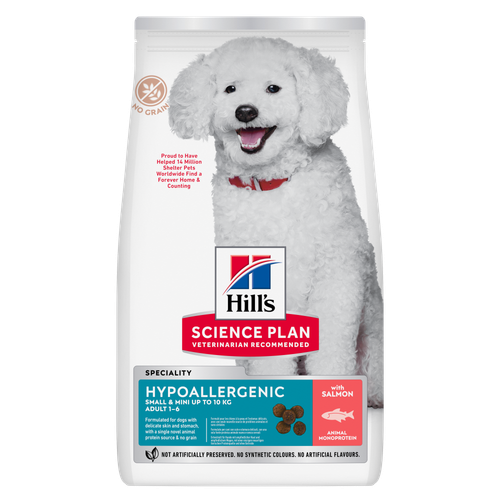 Hypoallergenic Small & Mini Adult Dog Food
Hypoallergenic Small & Mini Adult Dog FoodHILL'S SCIENCE PLAN Hypoallergenic Small&Mini Adult dog food with Salmon is complete pet food for adult small dogs 1–6 years old. It's formulated for dogs with delicate skin and stomach, with limited high quality novel protein sources & no grain.
Shop Now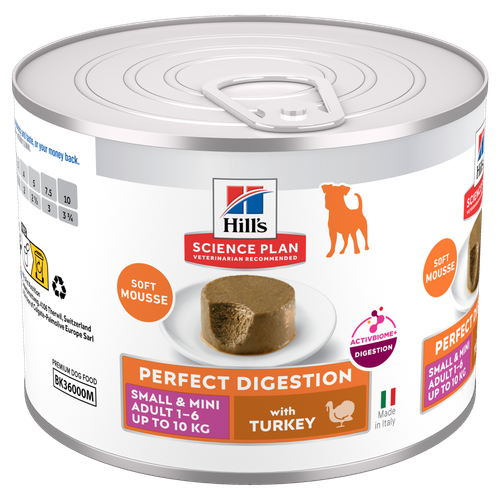 Perfect Digestion Small & Mini Adult Dog Food
Perfect Digestion Small & Mini Adult Dog FoodHill's Science Plan Perfect Digestion Small & Mini Adult Dog Food with Turkey is a complete premium pet food for small breed adult dogs aged 1–6 years. This deliciously smooth mousse is precisely balanced to deliver the appropriate amount of energy and to support digestive health in adult, small breed dogs.
Shop Now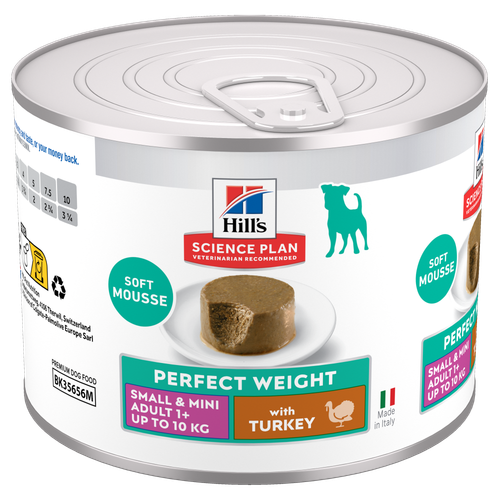 Perfect Weight Small & Mini Adult Dog Food
Perfect Weight Small & Mini Adult Dog FoodHill's Science Plan Adult Small & Mini Dog Food with Turkey is a complete premium pet food for adult small dogs from 1 year old that are prone to weight gain or slightly overweight. This deliciously smooth mousse is formulated to deliver the appropriate amount of energy to support weight maintenance in adult dogs.
Shop NowFeatured products Oral Care Adult Cat Food
Oral Care Adult Cat FoodHill's Science Plan Oral Care Adult Cat Food with Chicken contains clinically proven kibble technology to reduce plaque & tartar build up.
Shop Now Urinary Health Adult Cat Food with Chicken
Urinary Health Adult Cat Food with ChickenHill's Science Plan Urinary Health Adult Cat Food with Chicken supports the health of the whole urinary system. Suitable for sterilised cats.
Shop Now Sterilised Mature Adult Cat Food
Sterilised Mature Adult Cat FoodHill's Science Plan Sterilised Cat Mature Adult Cat Food with Chicken is specially formulated with ActivBiome+ Multi-Benefit Technology. It is a precisely balanced nutrition tailored to meet the needs of mature adult sterilised cats, ages 7+, and to promote graceful ageing.
Shop Now -
Dog
- Dog Tips & Articles
-
Health Category
- Weight
- Food & Environmental Sensitivities
- Urinary
- Digestive
- Joint
- Kidney
-
Life Stage
- Puppy Nutrition
- Adult Nutrition
- Senior Nutrition
Cat- Cat Tips & Articles
-
Health Category
- Weight
- Skin & Food Sensitivities
- Urinary
- Digestive
- Kidney
-
Life Stage
- Kitten Nutrition
- Adult Nutrition
Featured articles Develop your gut instinct | Hill's Pet
Develop your gut instinct | Hill's PetDigestive disorders can affect any part of the digestive system, from the stomach, small intestine and through to the large intestine.
Read More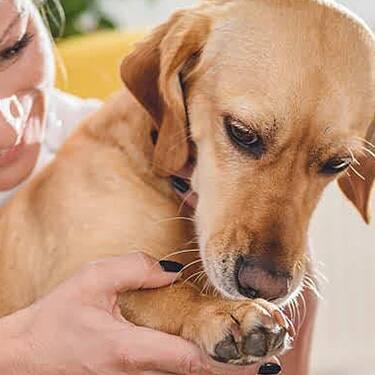 Virtual Vet Visits: What You Need to Know
Virtual Vet Visits: What You Need to KnowLearn the ins and outs of a televet appointment before you talk to a vet online.
Read More Tips For Mixing Wet And Dry Pet Food
Tips For Mixing Wet And Dry Pet FoodDiscover tips for mixing wet and dry pet food to ensure balanced nutrition and variety for your pet. For comprehensive feeding advice, visit Hill's Pet UK.
Read More -


You probably know some humans who deal with dandruff, but did you know dogs get dandruff, too? You may have noticed your pup scratching more often or seen white flakes on their bedding. Besides irritated skin, these signs can also point to a skin condition called walking dandruff.
When should you visit your vet for your dog’s dandruff? Since the signs of canine dandruff can be very similar to other skin issues, it's important to know what to watch out for and the possible treatment options to consider.
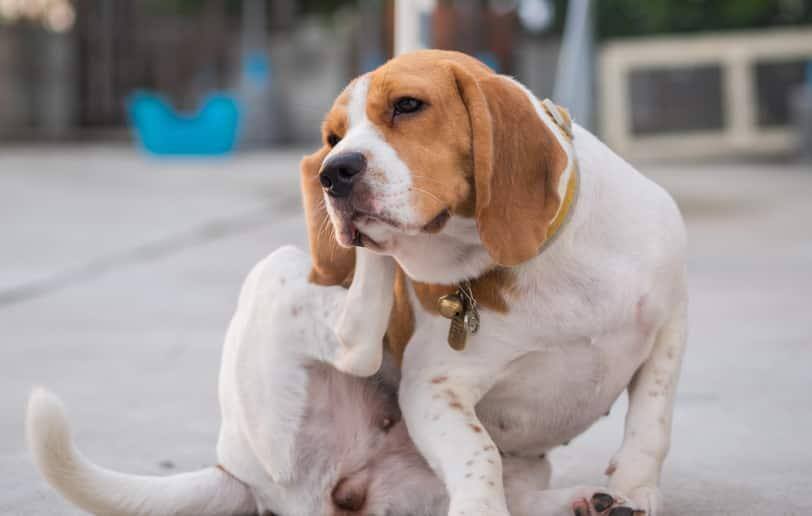
The Facts About Dog Dandruff
Dandruff is the presence of dead skin cells on your dog's coat. Depending on the colour of your dog's fur, it may be difficult to actually see the flakes, but they are often visible when they hop off the couch or put their head in your lap.
There are many ways a dog's skin can get irritated. From excessive licking to a nutritional issue, the root cause of dandruff can sometimes be difficult to identify. The first thing to ask yourself is whether you notice the dandruff all over your pup's coat or just in a particular area. Irritated skin in one concentrated spot could be due to a reaction to something your dog came in contact with, or it could be a more serious problem like an infection or parasite. Once you notice dandruff, consider visiting your vet for help. If you notice additional signs such as itching, reddened skin, irritation, or scaly patches of hair loss, then the best advice would be to consult with your vet immediately for further help. Since skin issues can have genetic, environmental, nutritional or parasitic causes, sometimes several different treatment options have to be explored.


Tasty Tips
Preventing & Treating Dandruff
There are a few things you can do to prevent dog dandruff and other skin problems. Blue Cross recommends that pet parents start by grooming their dogs regularly. Frequent brushing removes matted hair, leaves less of a breeding ground for parasites, and helps to stimulate the natural oils in the skin and fur. It also gives you the chance to spend a few minutes checking your dog for any unusual lumps, bumps, fleas, ticks and other potential issues.
Your vet might suggest bathing your dog more frequently to prevent dandruff. If you’re going to use a shampoo, the PDSA advises asking your vet to recommend one specially formulated for dogs. Make sure you dry your pet thoroughly after their bath, too.
If simple preventative measures like grooming and bathing are not getting rid of your dog’s dandruff, discuss special food options or intolerance tests with your vet. They can help you find a dog food with ingredients like omega-3 fatty acids and vitamin E that promote a healthy coat and immune system.
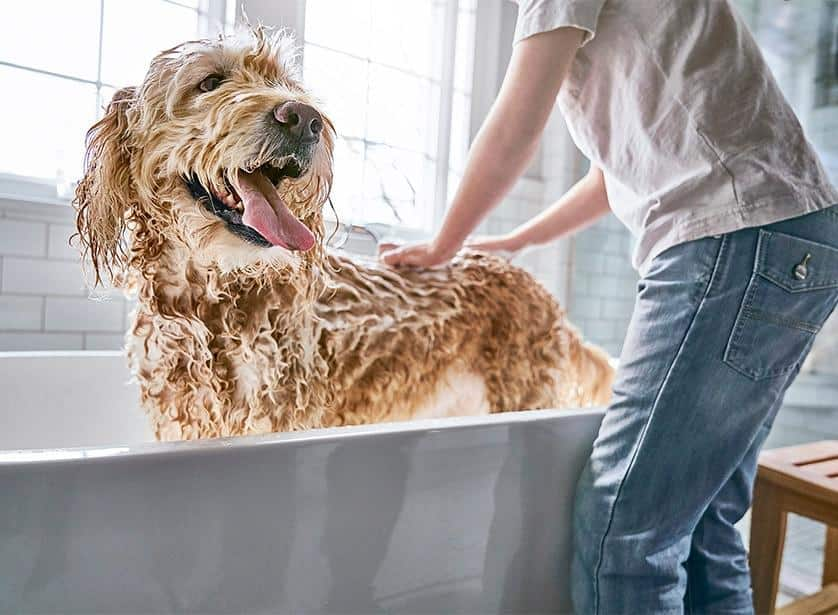
The Difference Between Dandruff and Walking Dandruff
A more serious possible cause for your dog's flaky, itchy skin is a condition called walking dandruff. The Kennel Club UK clarifies that walking dandruff is a parasitic infection called cheyletiellosis that is caused by mites. The Kennel Club notes that walking dandruff doesn’t typically cause itching, with the main sign being what seems like excessive dandruff. The condition is extremely contagious and can be easily spread to other pets in your household like cats and rabbits, so it’s important to see your vet as soon as possible.
Unfortunately, there is no quick fix for walking dandruff. Your vet will likely administer a topical treatment called a dip that coats your dog's fur in a mite-killing medicine. Dips and other treatments may need to be repeated once or twice every week for up to six weeks. You should also bring any other household pets to the vet for mite treatment, and you may need to treat your home with a pesticide designed for killing mites and fleas.
No one likes to see their pup itchy and uncomfortable. Once their dandruff or other skin issues are addressed, hopefully you and your dog can enjoy more time doing the things you love, itch-free.


Chrissie Klinger is an educator, writer and mother of two children, three dogs and three cats. Her dog Jake loves sitting on her lap every chance he gets! She enjoys living an active and eco-friendly lifestyle in rural Pennsylvania.
Related products
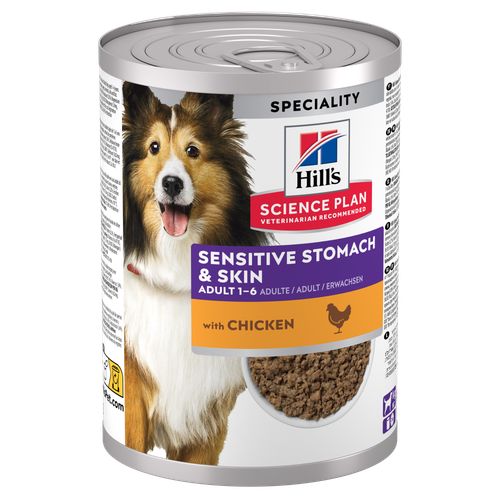
Hill's Science Plan Sensitive Stomach & Skin Adult Wet Dog Food with Chicken is a complete premium dog food for adult dogs from 1 year. This savoury tinned loaf is enriched with ingredients that support digestive health & skin care.

Hill's Science Plan Adult Small & Mini Dog Food with Turkey is a complete premium pet food for adult small dogs from 1 year old that are prone to weight gain or slightly overweight. This deliciously smooth mousse is formulated to deliver the appropriate amount of energy to support weight maintenance in adult dogs.

HILL'S SCIENCE PLAN Hypoallergenic Small&Mini Adult dog food with Salmon is complete pet food for adult small dogs 1–6 years old. It's formulated for dogs with delicate skin and stomach, with limited high quality novel protein sources & no grain.

Hill's Science Plan Perfect Digestion Small & Mini Adult Dog Food with Turkey is a complete premium pet food for small breed adult dogs aged 1–6 years. This deliciously smooth mousse is precisely balanced to deliver the appropriate amount of energy and to support digestive health in adult, small breed dogs.
Related articles
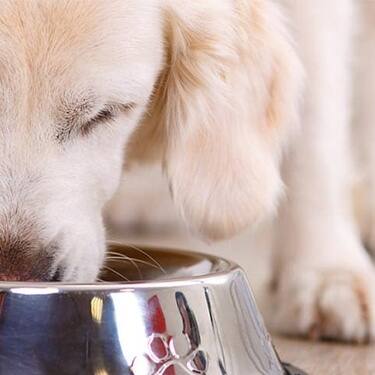
Explore the benefits of wet dog food and how it can improve your pet's wellbeing and happiness. For more nutritional insights, visit Hill's Pet UK.
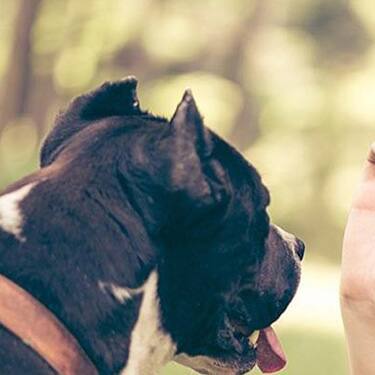
Learn what you can feed your pregnant or nursing dog to keep her and her new pups healthy.

Find the best nutrition for small breed dogs and what makes the perfect food choice for their health. Explore more guidance for small dogs at Hill's Pet UK.

Gurgling tummies in turmoil are not good news for pets. Owners who have to clean up the unfortunate consequences, digestive problems are one of the rare downsides to owning a pet.
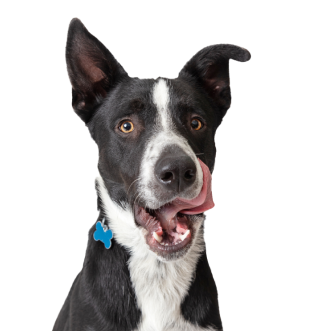
Put your dog on a diet without them knowing
Our low calorie formula helps you control your dog's weight. It's packed with high-quality protein for building lean muscles, and made with purposeful ingredients for a flavourful, nutritious meal. Clinically proven antioxidants, Vitamin C+E, help promote a healthy immune system.
Put your dog on a diet without them knowing
Our low calorie formula helps you control your dog's weight. It's packed with high-quality protein for building lean muscles, and made with purposeful ingredients for a flavourful, nutritious meal. Clinically proven antioxidants, Vitamin C+E, help promote a healthy immune system.

